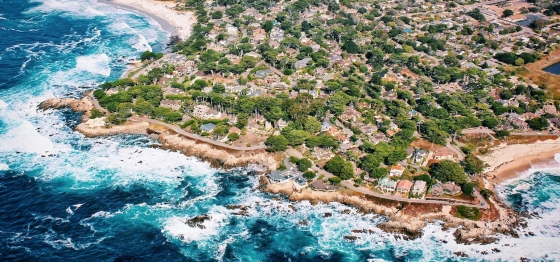Chicago (IL) Climate by Month
Chicago features a typical hot-summer humid continental climate, and experiences four distinct seasons. Winter in Chicago is very variable. The average winter produces 940 mm of snow. This is just an average, because most winters produce only a few snow falls during the season. Temperatures can vary wildly within the span of one week, but temperatures can often stay below freezing for several continues days or even weeks in January and February. The temperature in January averages about -2°C in the afternoon, and -10°C at night.
On a typical summer day, humidity is usually high and temperatures ordinarily reach anywhere between 26°C and 33°C. Overnight temperatures in summer usually drop to around 18°C. Thunderstorms occur during summer.
The best time to visit Chicago is May through September. Where the residents of Chicago prefer to stay indoors between November and March, they open the doors and celebrate starting April. This period the city comes alive since the sun increases in strength and occasionally rises above the skyscrapers. It can be a bit busy during this period so it is recommended to book a place to stay in advance.
Average day and night temperature
Visitors to Chicago can expect significant temperature changes throughout the year. Typically, daytime temperatures range from a comfortable 29°C in July to a very cold -1°C in the coolest month, January. Nights are cooler, with temperatures generally dropping to -9°C, particularly during the colder months.
The mean minimum and maximum temperatures throughout the year
Precipitation and rainy days
Chicago is known for its substantial rain/snowfall, with annual precipitation reaching 1062 mm. The climate in Chicago shows significant variation throughout the year. Expect high rainfall in June, with an average of 126 mm of precipitation over 14 rainy days. In contrast, January offers drier and sunnier days, with around 50 mm of snowfall over 10 snowy days.The mean monthly precipitation over the year, including rain, hail and snow
Sunshine over the year
For those who appreciate different seasons, Chicago serves as an ideal destination. Expect longer, more sun-filled days in July with an average of 10.6 hours of sunshine daily, and embrace the darker days in December, offering only 3.6 hours of daily sunlight.Monthly hours of sunshine
Daily hours of sunshine
Average humidity
The relative humidity is low throughout the year in Chicago.
Relative humidity over the year
Average wind speed
The mean wind speed over the year in Chicago ranges from 4°C in June to 6°C in January.
The mean monthly wind speed over the year (meters per second)
The best time of year to visit Chicago in the United States of America
During the months of May and September you are most likely to experience good weather with pleasant average temperatures that fall between 20°C and 26°C.Other facts from our historical weather data:
The hottest season / summer takes place in June, July, August and September.
The coldest season / winter is in the following months: January, February and December.
July has an average maximum temperature of 29°C and is the warmest month of the year.
The coldest month is January with an average maximum temperature of -1°C.
June tops the wettest month list with 126 mm of rainfall.
January is the driest month with 50 mm of precipitation.
July is the sunniest month with an average of 319 hours of sunshine.
No idea where to travel to this year? We have a tool that recommends destinations based on your ideal conditions. Find out where to go with our weather planner.




